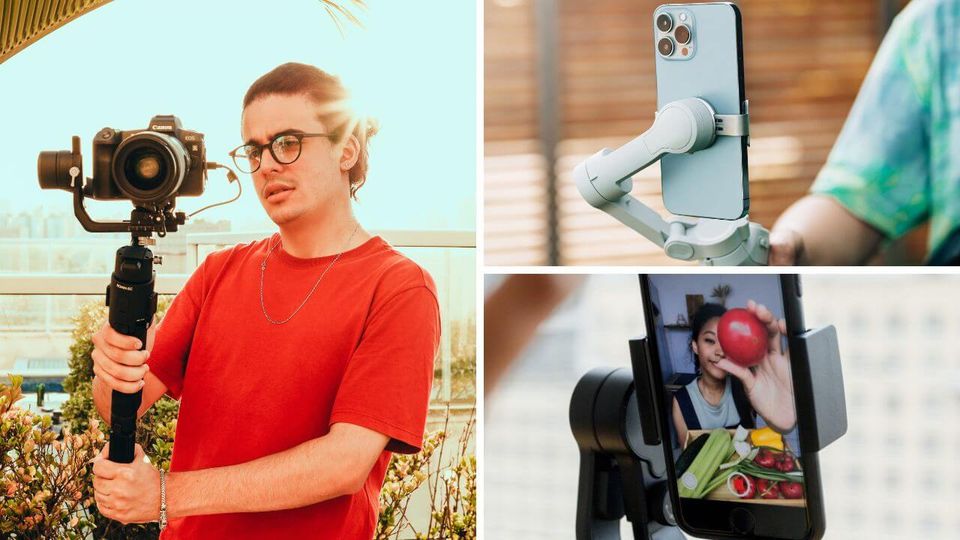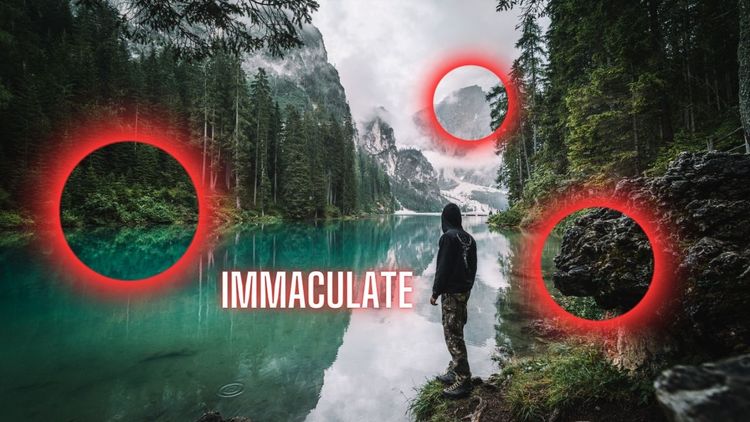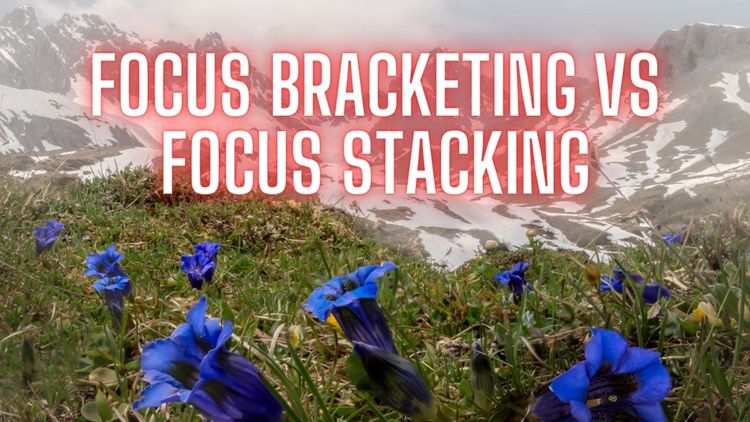Vertical Video Shooting: Is a 3-Axis Gimbal Worth the Investment?

Whether you are a professional videographer or an amateur filmmaker, getting smooth and stable shots is essential for creating high-quality content.
One tool that can help you achieve this is a gimbal.
A gimbal is a device that uses motors and sensors to stabilize your camera or smartphone and keep it level, even when you are moving.
There are different types of gimbals available on the market, including two-axis and three-axis gimbals.
In this article, we will focus on the 3-axis gimbal and answer the question, "Do I need a 3-axis gimbal for vertical videos?"
Click here to discover the best gimbals for vertical videos!
Do You Need A 3 Axis Gimbal For Vertical Video?
The answer depends on the type of camera you're using and the kind of footage you want to capture.
However, in general, a 3-axis gimbal can greatly improve the quality of your vertical video footage.
Firstly, let's start by discussing what a gimbal actually is. A gimbal is a tool used to stabilize a camera or other recording device.
It allows you to capture smooth, steady footage without any unwanted camera shake or jitter.
There are several different types of gimbals available, including handheld gimbals and camera-mounted gimbals.
The two most common types of camera-mounted gimbals are 2-axis and 3-axis gimbals.
A 2-axis gimbal stabilizes a camera along two axes, usually pitch, and roll. This means it can keep the camera level and stable as it tilts up and down or side to side.
However, it doesn't provide any stabilization along the yaw axis, which means it can't compensate for any left-to-right movement.
On the other hand, a 3-axis gimbal stabilizes a camera along all three axes: pitch, roll, and yaw.
This means it can keep the camera level and stable as it tilts up and down, moves side to side, and rotates left and right.
So, to answer the question of whether you need a 3-axis gimbal for vertical videos, the answer is yes.
Vertical videos require stabilization along the yaw axis to keep the camera level and stable as it rotates from side to side.
A 2-axis gimbal won't be able to provide this level of stabilization, resulting in shaky and unstable footage.
Of course, this assumes that you're using a camera that is compatible with a gimbal in the first place.
Most action cameras, such as the GoPro, are designed to be used with gimbals and will have built-in stabilization features.
However, other types of cameras, such as DSLRs, may require a separate gimbal to be used for stabilization.
It's also worth noting that gimbals can vary in quality and price. A high-quality 3-axis gimbal will provide the best stabilization and ensure that your footage is smooth and stable, even in challenging conditions.
However, these gimbals can be expensive, and you may not need such a high level of stabilization for all of your videos.
In summary, if you want to capture smooth and stable vertical videos, a 3-axis gimbal is definitely worth considering.
It provides the necessary stabilization along all three axes to ensure that your footage is free from unwanted camera shake and jitter.
However, it's important to choose the right gimbal for your camera and the type of footage you want to capture.

What is a Gimbal and How Does it Work?
A gimbal is a tool that is used to keep a camera or smartphone stabilized while you are moving.
It does this by using sensors and motors to detect and adjust the motion of the camera.
The three axes of a gimbal are roll, pitch, and yaw. The roll axis stabilizes the camera's left and right movements, while the pitch axis stabilizes the camera's up and down movements.
The yaw axis stabilizes the camera's side-to-side movements.
What is a 3-Axis Gimbal?
A 3-axis gimbal is a type of gimbal that stabilizes the camera in all three axes: roll, pitch, and yaw.
This means that the gimbal can detect and adjust for all types of movements, even if you are walking or running.
A 3-axis gimbal is typically used for professional videography, but it can also be used by amateurs who want to create high-quality content.
Why Do You Need a Gimbal?
A gimbal is essential for videographers who want to create smooth and stable footage.
Without a gimbal, your shots may appear shaky and unprofessional.
A gimbal ensures that your camera stays level, even if you are moving quickly or if the terrain is uneven.
It also eliminates camera shake and allows you to capture high-quality footage that is free of jitters and vibrations.
What is the Difference Between a 2-Axis and a 3-Axis Gimbal?
The main difference between a 2-axis and a 3-axis gimbal is the number of axes that the gimbal stabilizes.
A 2-axis gimbal stabilizes the camera in two axes: roll and pitch.
This means that it can detect and adjust for left and right movements, as well as up and down movements. However, it cannot stabilize side-to-side movements.
A 3-axis gimbal stabilizes the camera in all three axes: roll, pitch, and yaw. This means that it can detect and adjust for all types of movements, making it more versatile than a 2-axis gimbal.
When Should You Use a Three-Axis Gimbal?
If you are shooting vertical videos, a 3-axis gimbal can be very useful. It can detect and adjust for all types of movements, ensuring that your shots are smooth and stable.
A 3-axis gimbal is also ideal for shooting action shots, such as sports or other fast-paced activities.
It can keep the camera level and free of camera shake, allowing you to capture high-quality footage that is both clear and sharp.

Find The Right Gimbal Stabilizer For Your Type Of Camera
Vertical videos are becoming increasingly popular on social media platforms such as Instagram, TikTok, and Snapchat.
To make sure your vertical video content looks smooth and professional, you may need to use a camera stabilizer.
Gimbal work by stabilizing your camera or smartphone to eliminate shaky footage and provide smooth movement.
They come in various types, including handheld, mounted, and drone gimbals.
When it comes to choosing the right camera for your gimbal, there are several options available.
If you're using a smartphone, a handheld 3-axis gimbal is a great option.
This type of gimbal stabilizer can be easily attached to your smartphone and held in your hand or mounted on a tripod.
For DSLR cameras, a 3-axis gimbal or tripod with an L-Bracket is the best option.
This will provide you with more stability and allow you to pan horizontally and tilt vertically without any shaky footage.
Action cameras like GoPro already have built-in image stabilization, so you would only use a gimbal for a GoPro in rare cases where you have action-packed motion scenes.
In those cases, a two-axis or three-axis gimbal would work best to keep the camera stable and capture smooth footage.
If you are using a drone camera, a drone gimbal is the best option for stabilizing your footage.
A three-axis gimbal is typically used for drone cameras as it can stabilize the camera on all three axes (yaw, pitch, and roll) and keep it level during flight.
Camera gimbals are also available for handheld use, such as the DJI Ronin or the Zhiyun Crane.
These gimbals can be used with both DSLR cameras and mirrorless cameras, providing smooth stabilization and ease of use.
Overall, using a gimbal or stabilizer is essential for capturing smooth and professional-looking vertical videos.
Whether you're using a smartphone, DSLR camera, action camera, or drone camera, there is a gimbal available to suit your needs.
Click here to discover the best camera gimbal for vertical video creation!
Your friend,
Ben
Discover the best gimbals for vertical video creation by clicking below:







